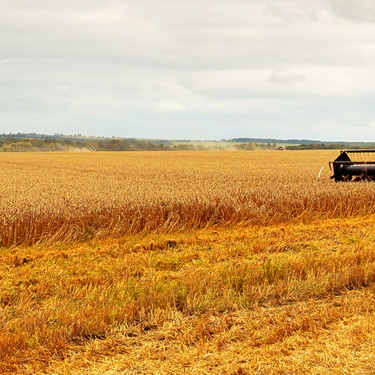
Harvest season can make or break a farm’s profitability. Delays cost money, spoil crops, and create a domino effect of problems that ripple through your entire operation. The good news? Most harvest delays stem from issues you can control with better planning and smarter resource management.
Whether you’re dealing with equipment breakdowns, labor shortages, or unpredictable weather, the right strategies can keep your harvest running smoothly. Here are practical ways to minimize delays on your farm.
1. Implement Precision Planting Techniques
Starting your season with precision planting sets you up for a more synchronized harvest. When you plant seeds at uniform depths and spacing, crops mature at similar rates, which means you can harvest larger sections in one pass instead of making multiple trips to the same field.
Modern planters equipped with GPS guidance and variable rate technology take the guesswork out of seeding. You’ll see more consistent germination and growth patterns across your fields, which translates directly to fewer delays when harvest time arrives. The initial investment pays off quickly when you consider the time saved during those critical harvest windows.
2. Optimize Irrigation Systems
Inconsistent water supply leads to uneven crop maturity, forcing you to either harvest underripe sections or leave overripe areas to wait too long. Modern irrigation systems with soil moisture sensors and automated controls deliver water precisely when and where your crops need it.
Drip irrigation and center pivot systems with variable rate technology allow you to customize water application across different zones in your fields. This precision keeps your entire crop on a consistent growth timeline, making harvest planning much more straightforward and predictable.
3. Upgrade Harvesting Equipment
Old equipment breaks down at the worst possible times. When your combine stops mid-harvest, you’re not just losing time on repairs—you’re watching your harvest window slip away while crops continue maturing past their prime.
Newer harvesting equipment runs more reliably and often works faster, too. If purchasing new machines stretches your budget too thin, consider leasing options or forming equipment-sharing arrangements with neighboring farms. Agriculture and farming are industries that benefit from trailer rentals, particularly during peak seasons when you need extra capacity to move harvested crops quickly from the field to storage.
4. Invest in Weather Monitoring Technology
Weather dictates almost everything during harvest season, but modern technology helps you work with it instead of against it. Advanced weather stations and forecasting apps give you hyperlocal predictions that help you plan your harvest activities with confidence.
Real-time data about temperature, humidity, wind speed, and precipitation allows you to grab narrow windows of favorable conditions. You’ll know exactly when fields will be dry enough to enter and when you need to pause operations before incoming weather ruins your progress.
5. Streamline Logistics and Transportation
Getting crops from the field to storage or the market quickly prevents quality loss and keeps your harvest moving. Map out your transportation routes in advance and identify potential bottlenecks before they slow you down.
Coordinate with grain elevators, processors, or buyers to understand their receiving schedules and capacity. Having multiple delivery options lined up gives you flexibility when one location gets backed up. Keep your trucks and trailers maintained and positioned strategically to minimize empty travel time.
6. Utilize GPS for Efficient Field Navigation
GPS technology eliminates overlap and gaps in your harvest patterns, directly translating into time savings. Modern guidance systems can operate your equipment with centimeter-level accuracy, even in low-visibility conditions such as dust or darkness.
This precision allows you to work efficiently during early morning or evening hours when conditions might otherwise limit your operations. You’ll cover more acres per hour while using less fuel and putting less wear on your equipment. The data collected also helps you analyze performance and identify areas for improvement in future seasons.
Reducing harvest delays takes planning, investment, and consistent execution throughout the growing season. Start implementing these strategies now, and you’ll see the payoff when harvest time arrives. Your bottom line will thank you for every delay you prevent.
Bio: Casey is a passionate copyeditor highly motivated to provide compelling SEO content in the digital marketing space. Her expertise includes a vast range of industries from highly technical, consumer, and lifestyle-based, with an emphasis on attention to detail and readability.
























